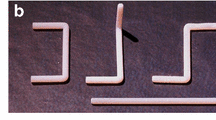Abstract
Let us imagine having to design an elastic vertical pillar that must transmit an axial compressive load. We know the extents of the upper and of the lower cross-sections of the pillar and its longitudinal length, but the profile of the lateral surface is arbitrary. We want to find the shape of this lateral surface in order that the distibution of the normal stresses at the bottom is as uniform as possible. A partial answer to the problem is given in two-dimensional elastostatics.
Similar content being viewed by others
References
A.E.H. Love, A Treatise on the Mathematical Theory of Elasticity. Cambridge: The Univ. Press (1927).
H. Neuber, Kerbspannungslehre, Berlin/Heidelberg/New York: Springer (1985).
H. Neuber, Die Belastete Parabelkerbe. Zeit. Angew. Math. Mech. 42 (1962) 477–487.
H.F. Weinberger, A First course in Partial Differential Equations. Waltam: Blaisdell (1965).
G. Worch, Elastische Scheiben. Beton-Kalender 2 (1967) 1–28.
Author information
Authors and Affiliations
Rights and permissions
About this article
Cite this article
Villaggio, P. The pillar of best efficiency. J Elasticity 42, 79–89 (1996). https://doi.org/10.1007/BF00041224
Received:
Issue Date:
DOI: https://doi.org/10.1007/BF00041224




